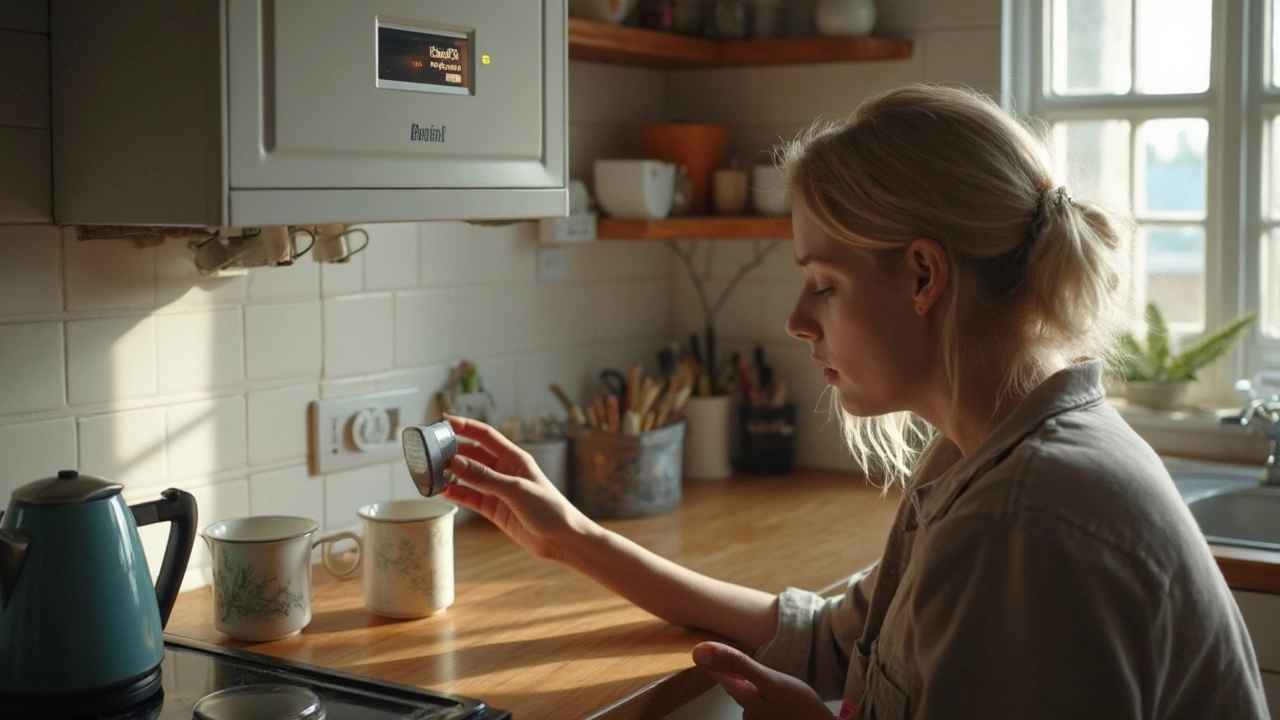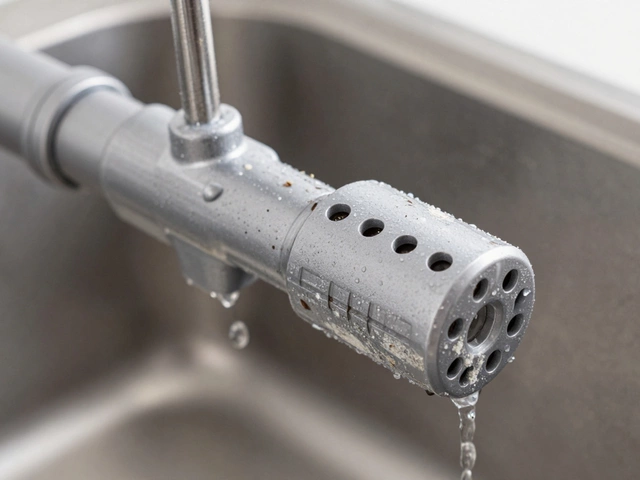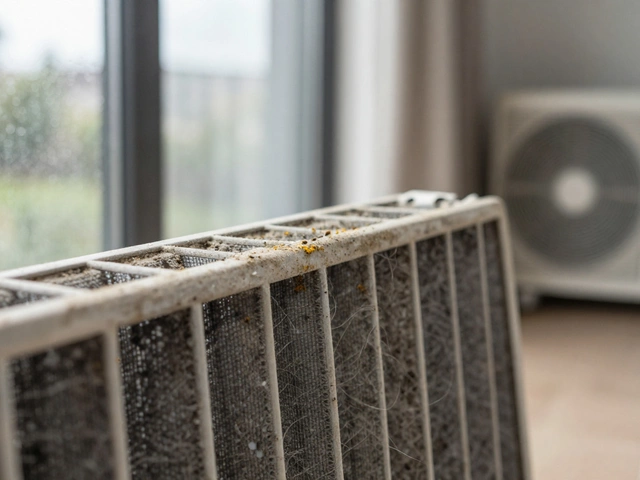You’re halfway through a shower, and suddenly the water goes from toasty to freezing. Super frustrating, right? Few things ruin a Monday morning faster than a surprise ice-cold blast when you’re expecting hot water. This happens to people all the time, and trust me, you’re not alone in dealing with it.
Most of the time, hot water turning cold isn’t some mysterious home curse. It usually comes down to a handful of simple issues — stuff like a messed-up thermostat, a blown heating element, or even a sneaky little problem with the dip tube inside your water heater. Sometimes, it’s just a case of too many folks trying to shower at once (looking at you, busy family homes).
Before calling in the cavalry, check if the issue’s a one-time fluke or a pattern. Is it happening after everyone’s used the water heater in a row? Does it switch from hot to cold then back again while running? Answering these questions helps narrow down what’s going wrong, and trust me, a bit of troubleshooting now can save you a ton of hassle later.
- What’s Causing My Hot Water to Go Cold?
- How to Troubleshoot Common Issues
- Signs You Need Professional Help
- Pro Tips to Prevent Future Hot Water Surprises
- When a New Heater is the Best Solution
What’s Causing My Hot Water to Go Cold?
Ever turn on the tap expecting heat, but it sputters out arctic water instead? There’s usually a solid reason. Let’s break down the leading suspects for hot water running cold in your home.
- Water heater size and usage: If you’ve got a small tank or a big crowd using hot water at once, you’ll run out fast. A standard 40-gallon tank will support two quick showers, but add in a load of laundry, and suddenly, you’re out of hot water mid-rinse.
- Broken heating element (electric heaters): Electric water heaters rely on one or two heating elements. If one fails, the other one won’t be able to keep up. You’ll notice the water gets warm for a few minutes, then turns cold.
- Malfunctioning gas burner (gas heaters): Gas models use a burner at the bottom. If the flame goes out or gets clogged, you’ll lose that steady hot water supply.
- Thermostat issues: Sometimes the tank’s thermostat gets set too low, or it fails altogether. You might just need to nudge up the temp—or swap it out if it’s shot.
- Dip tube failure: This plastic tube brings cold water to the bottom of the tank. If it cracks or slips, cold water mixes with the hot, giving you lukewarm or straight-up cold water from your hot tap.
- Sediment buildup: Over time, minerals from hard water settle at the bottom of the tank. This layer acts like insulation, making it hard for the heating element or burner to get water hot. If you live somewhere with hard water, sediment might be the sneaky culprit.
- Old age: Most water heaters last about 8-12 years. If yours is pushing double digits, it might just be losing efficiency or getting too gunked up inside to do its job right.
Check out the stats on just how common these issues are:
| Problem | Chance After 7 Years | Quick Fix? |
|---|---|---|
| Heating Element Failure | 40% | Usually |
| Thermostat Malfunction | 35% | Yes |
| Sediment Buildup | 25% | Temporary |
| Dip Tube Failure | 15% | Requires Replacement |
Water heater problems usually don’t show up out of nowhere. If your showers have gone from spa-like to glacial, it’s likely one of these common issues. A little understanding can help you pick the right solution faster and maybe even save you a call to the plumber.
How to Troubleshoot Common Issues
If your hot water running cold is driving you nuts, don’t panic yet. Plenty of issues can be checked (and sometimes fixed) with basic know-how and a little patience. Here’s how to zero in on the problem before you call a water heater repair pro.
- Check your breaker (for electric heaters): No hot water at all? Head to your electrical panel and see if the breaker that controls your water heater is tripped. Flip it back on if needed and wait about half an hour to see if you get hot water again.
- Set the thermostat correctly: Sometimes, the thermostat is set too low (ideal is usually 120°F/49°C). Adjust it a bit higher. If it’s stuck or doesn’t click, it could be faulty and may need replacing.
- Look for a blown heating element: Electric tanks have two heating elements. If one fails, you’ll get only lukewarm water or run out quickly. These are replaceable parts, but you’ll usually want a pro unless you really like dealing with wires and water at the same time.
- Test for a pilot light: Gas heaters need their pilot light on. If it’s out, follow the relighting instructions on your heater (usually a sticker nearby). If it keeps going out, you could have a bad thermocouple.
- Peek at the dip tube: The dip tube forces cold water to the bottom of the tank. If it snaps or cracks, you’ll end up mixing cold water with hot at the top of the tank—so the ‘hot’ water runs cold fast. This isn’t hard to fix, but it’s a little messy.
- Flush out sediment: Over time, minerals gather at the bottom of your tank, especially with hard water. That sediment makes your heater work way harder (sometimes making popping/rumbling noises). Flushing the tank once or twice a year clears this out and helps the unit last longer.
Ever wonder how often these issues pop up? Turns out, according to stats from a 2023 HomeServe homeowner survey, the three most common causes for hot water running cold are heater element failure (32%), thermostat trouble (25%), and pilot light problems (18%).
| Main Issue | Percentage of Cases |
|---|---|
| Broken Element | 32% |
| Thermostat Problem | 25% |
| Pilot Light Out | 18% |
| Other | 25% |
One last thing—if your hot water lasts only a few minutes, don’t forget how much hot water multiple people and appliances can drain, especially in small or older tanks. Space out showers or avoid running major appliances at the same time if you’re constantly stuck with cold water.

Signs You Need Professional Help
Sometimes you just can’t DIY your way out of a hot water running cold problem. Here’s when it’s time to stop guessing and call in the pros.
- Strange noises: If your water heater sounds like it’s popping, banging, or making constant hissing noises, you could have a real mess on your hands. This usually means there’s buildup or a broken part inside—something a pro knows how to handle without making it worse.
- Water leaks: Any puddle forming under your heater is a red flag. Tiny leaks can quickly turn into serious floods. Professionals can track down leaks fast, replace faulty parts, and keep water damage from spreading.
- Rusty or dirty water: If your hot tap runs brown or totally gross, don’t risk it. This is usually a sign that the inside of your heater—or your pipes—are rusting away. Only a tech can tell how bad it is and what to replace: the unit, anode rod, or just a pipe.
- Electrical or gas issues: If your water heater repair involves fuses, breakers, or gas lines, don’t ignore it. Smelling gas or seeing scorch marks are signs you need a real expert. Electrical and gas repairs are never a safe DIY project.
- Constant resets: If you’re rebooting the heater every week, something is wrong with the thermostat or a core piece. This can be a sign of a failing heating element or a broken control board—stuff that needs technical skill and the right tools.
Barely getting any hot water, or if it keeps going ice cold even after everyone else left the house an hour ago? That could mean your heating element is shot or the thermostat has given up. These fixes are tricky if you don’t know what you’re doing, and can get expensive fast if you break something else trying to DIY it.
| Issue | DIY Fix? | Call a Pro? |
|---|---|---|
| No hot water at all | If breaker or pilot issue | If resets or element fail |
| Rusty water | Flush tank, maybe | Replace anode/parts |
| Leaks | Tighten fittings | For tank or major leak |
| Odd noises | Drain tank (sediment) | Persistent after flushing |
If you see any of these signs, skip the YouTube tutorials and call a licensed pro. It’ll save your nerves, your wallet, and maybe even your home from water damage. A legit water heater repair can add years to your system—as long as you catch the big stuff before it goes sideways.
Pro Tips to Prevent Future Hot Water Surprises
Everybody hates that freezing shock in the middle of a hot shower. If you’re tired of your hot water running cold or having to call for water heater repair, there are a few real-world steps to keep things running smooth. Most of it is pretty easy and you won't need a toolbox the size of a car trunk.
- Stick to a Maintenance Schedule: Even a cold water issue can start slow – a little sediment here, a bit of corrosion there. Experts recommend flushing your tank-style heater at least once a year. That means draining a few gallons out to keep sediment from piling up and stealing your heat.
- Test Your Pressure-Relief Valve: This is a small step a lot of folks forget. Give the pressure-relief valve a quick lift (it’s usually on top or side of the tank). If water doesn’t spurt out, it could be stuck and that’s bad news for both heat and safety.
- Don’t Ignore Weird Noises: Rumbling, popping, screaming—your water heater’s not haunted. It’s just giving you a heads-up. Popping means sediment’s built up. If it’s whining or screeching, you may have scale on your heating elements.
- Insulate Your Pipes: If your hot water loses heat in the pipes, you’ll get a lukewarm mess at the tap. Wrapping exposed hot water pipes with foam sleeves helps keep the heat in, especially if your heater lives in the garage or attic.
- Set the Right Temperature: Setting your heater above 120°F is risky (and can thump your energy bill). Too low and bacteria might grow. 120°F is the sweet spot for most homes and helps prevent water temperature problems.
- Replace Old Parts Before They Fail: Replace anode rods every 3-5 years, and don’t skimp if your dip tube looks worn out. A bad dip tube is one of the top causes of hot water running cold too soon.
Here’s a fun reality: according to a 2024 plumbing industry report, nearly 60% of calls for “no hot water” traced back to things homeowners could have caught early with some basic maintenance. Skipping checkups can cut a water heater’s life by a third.
| Task | How Often |
|---|---|
| Flush Tank | 1x per year |
| Test Pressure Valve | 2x per year |
| Replace Anode Rod | Every 3-5 years |
| Wrap Pipes | 1x initial install, check yearly |
Rex, my dog, once knocked over a heap of towels against the heater and blocked the air intake—don’t do what Rex did. Keep junk away from your heater! With a little attention and better habits, you’ll say goodbye to hot water running cold out of the blue.

When a New Heater is the Best Solution
Sometimes, fixing your old unit starts to feel like putting duct tape on a sinking ship. If your hot water running cold has become a regular thing and nothing seems to fix it, your water heater might just be on its last legs. Most traditional water heaters last about 8-12 years. If yours is getting close to or past that, replacement is probably smarter than repair.
Here’s when a new water heater just makes sense:
- The tank is leaking. Once it starts leaking, there’s no reliable, safe patch job.
- Rusty, dirty water comes out when you turn on the hot tap.
- You’ve had several repairs in the past year and costs are piling up.
- Your energy bills are creeping up and your heater’s efficiency is way down.
- The heater makes rumbling or banging noises, even after flushing it.
Gas and electric water heaters both wear out, but gas ones tend to call it quits a bit sooner. If you’ve got an old model or one that’s always short on hot water, swapping in a modern high-efficiency option can slash your utility bills by up to 15% compared to older models.
| Heater Age | Common Issues | Replacement Recommended? |
|---|---|---|
| 0-5 years | Minor repairs, part failure | Usually not |
| 6-10 years | Leaks, heating element problems | Maybe |
| 11+ years | Rust, major leaks, repeated outages | Yes |
When looking for a new unit, consider your home’s hot water needs, energy source, and budget. Tankless heaters are getting popular for small families, while old-school tank models may still work better for large households with high water use.
And don’t forget about sizing. Buy a heater that’s too small, and you’re back where you started: cold water issues. Too large, and you’re just wasting cash on heating water you never use. If in doubt, chat with a trusted local plumber—better to get advice now than regret later. If you notice your water temperature problems keep coming back, this is your signal to pull the plug. Your comfort (and sanity) is worth the upgrade.





